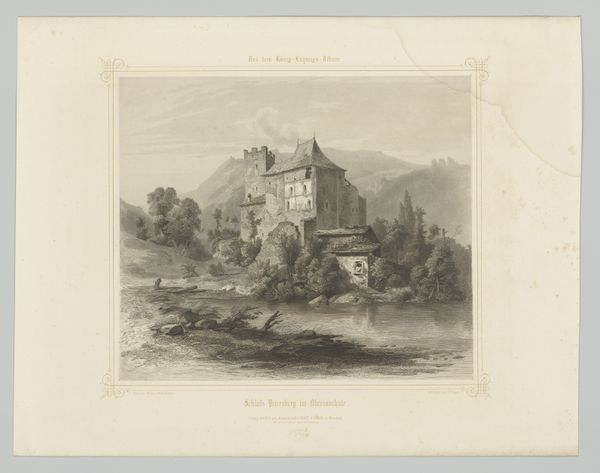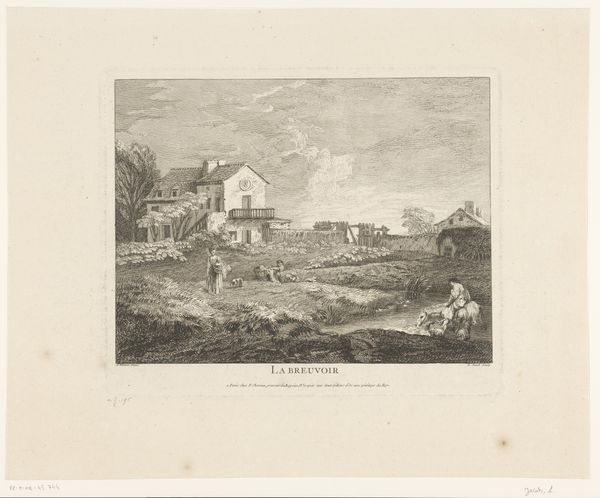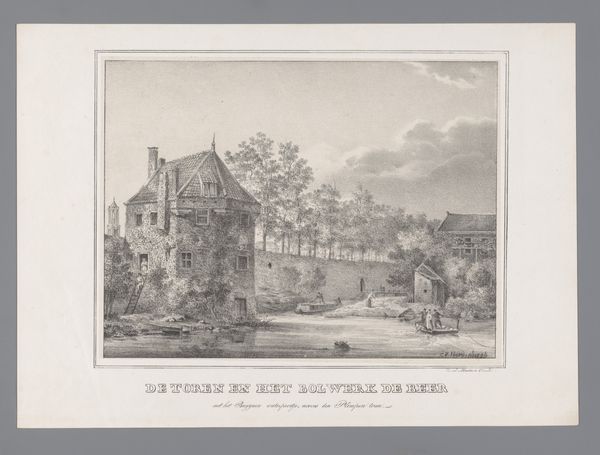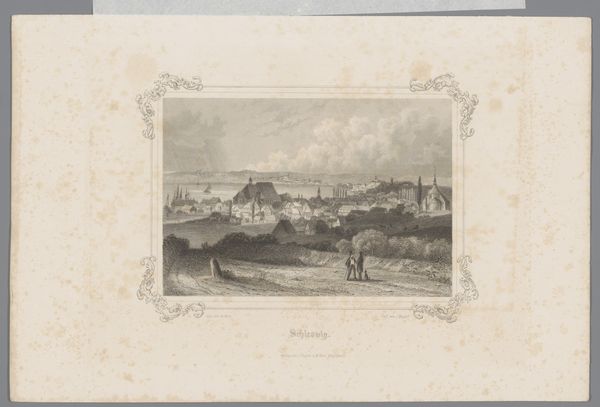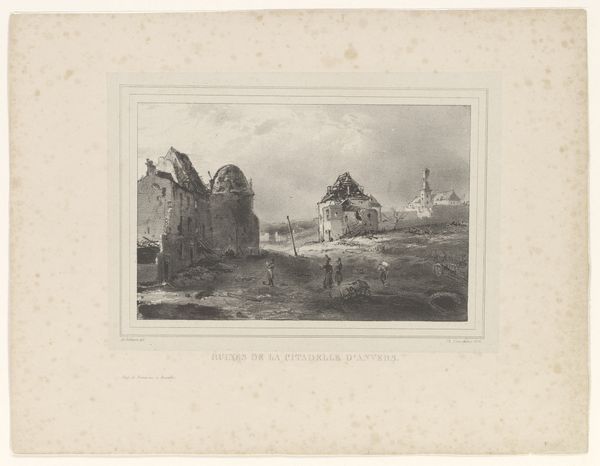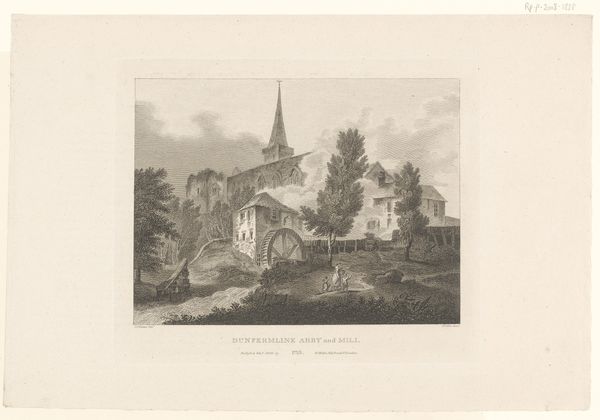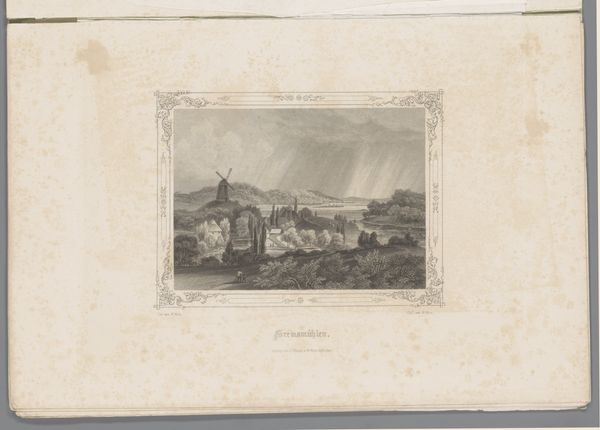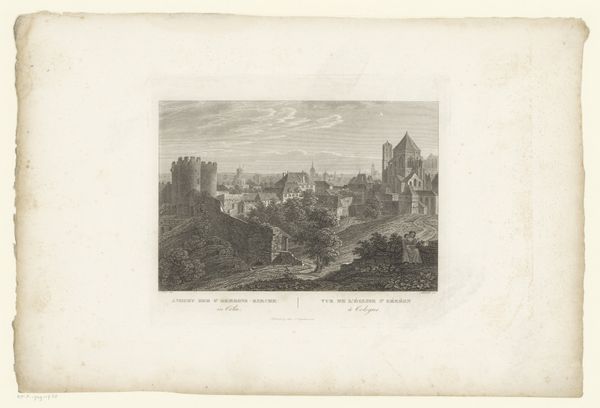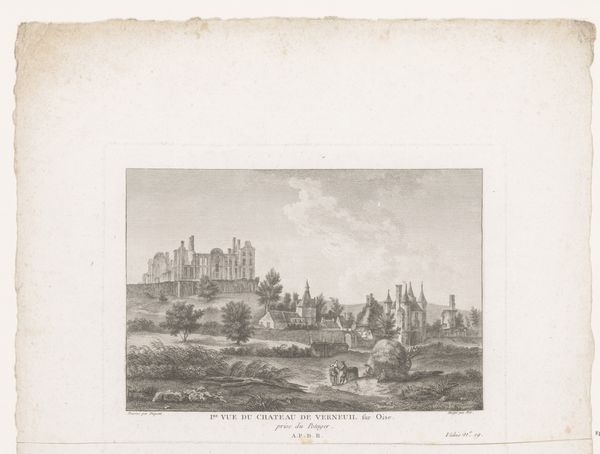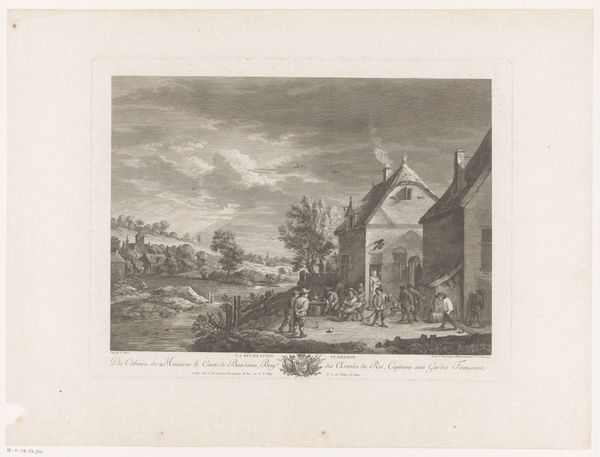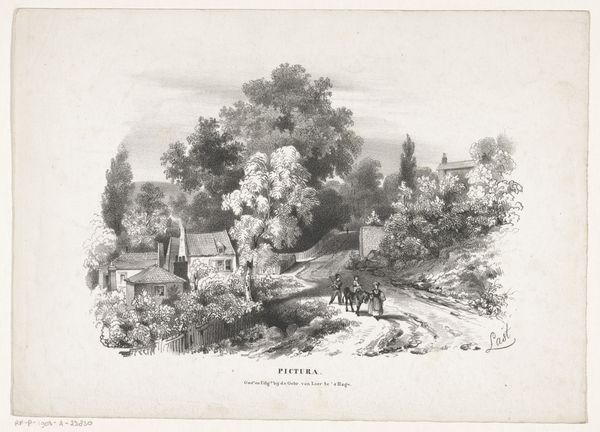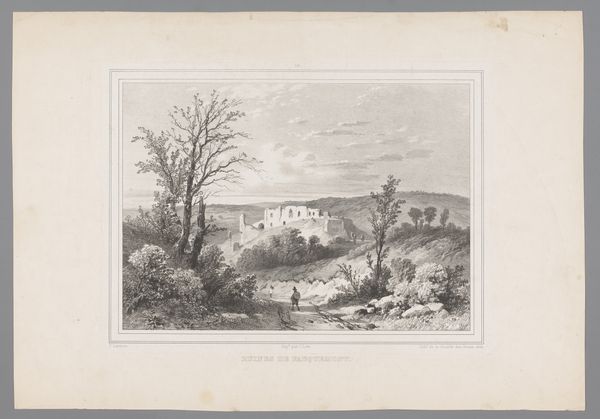
print, etching
# print
#
etching
#
landscape
#
romanticism
#
history-painting
Dimensions: height 364 mm, width 550 mm
Copyright: Rijks Museum: Open Domain
Curator: Let’s discuss "Ruïnes van de kerk en het huis van generaal Chassé, 1832," an etching by Auguste Raffet, created in 1833 and held here at the Rijksmuseum. What's your initial take? Editor: My first impression is overwhelmingly somber. The stark contrast in shading and the meticulous detail in the ruined structures convey a powerful sense of desolation. It’s visually arresting in its depiction of destruction. Curator: Indeed. This work reflects the Romantic sensibility through a historical lens. It captures the aftermath of the Siege of Antwerp, a significant event in Belgian history, portraying not just physical ruins but also the human cost of conflict. The focus on General Chassé connects the destruction to a specific political and military figure. Editor: I'm struck by how Raffet uses line and shadow to create texture. The crumbling walls, the scattered debris – there’s a real sense of depth and weight, making the devastation almost palpable. How would the imagery have resonated with the contemporary audience? Curator: It's highly likely that Raffet intended to convey the brutality and waste of war, particularly as experienced by civilian populations. In the Romantic tradition, there is an exploration of the sublime through ruin, prompting viewers to reflect on human conflict. The ruined church might evoke feelings about cultural disruption and faith. Editor: Looking at the group of figures huddled on the right, their posture suggests exhaustion and defeat, accentuating the romantic-era pathos. They're integrated into the devastation, yet somewhat separate from the immediate wreckage of buildings. Their body language carries so much meaning. Curator: That’s an important observation. The inclusion of human figures contextualizes the scale of the catastrophe. Their presence directs the audience to a personal engagement beyond the architectural assessment of destruction. It transforms the scene from one of objective record to one infused with social and emotional repercussions. Editor: I see the remnants of beauty amongst chaos, a stark contrast between order and the sublime chaos and Romanticism sought. I'm particularly drawn to the details in the smoke and textures of stone rendered through such tight line work. Curator: And viewing it now, the print invites us to consider the ongoing roles and responsibilities of states and institutions when war comes into our communities and destroys civic resources. Editor: A potent, carefully wrought portrayal and insightful way to frame this etching today. Thank you.
Comments
No comments
Be the first to comment and join the conversation on the ultimate creative platform.
